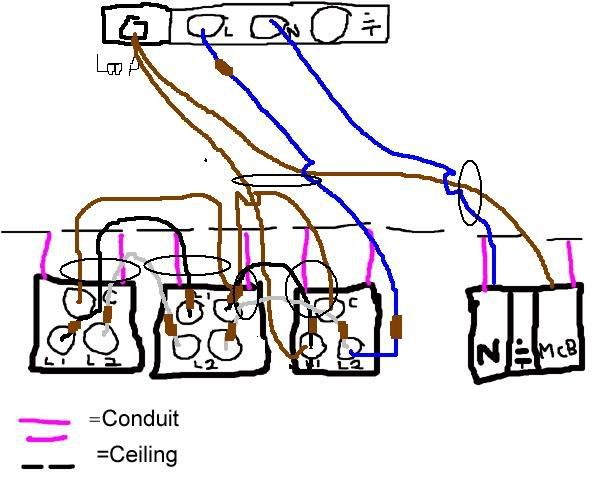
I have a test on this coming up, but im a little confused on the exact wiring of such an installation. Fundamentals and a circuit diagram I am ok on, but the wiring of it confuses me.
To reiterate:
Twin and earth and 4-core
6A MCB
flourecsent batten
plastic conduit
2x2-way switches and intermediate
NO!! chocoblocks/ junction boxes. Runs in the ceiling void.
A wiring diagram would be much appreciated, kind sirs/ ladies.






